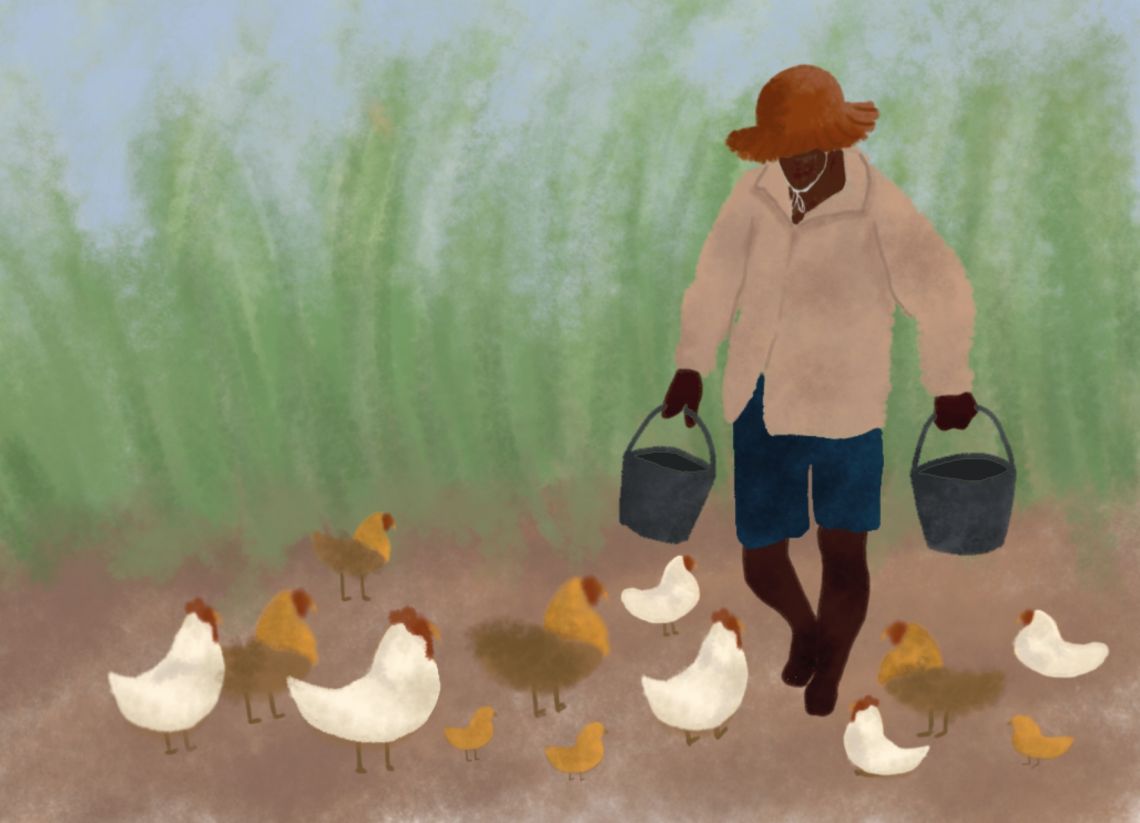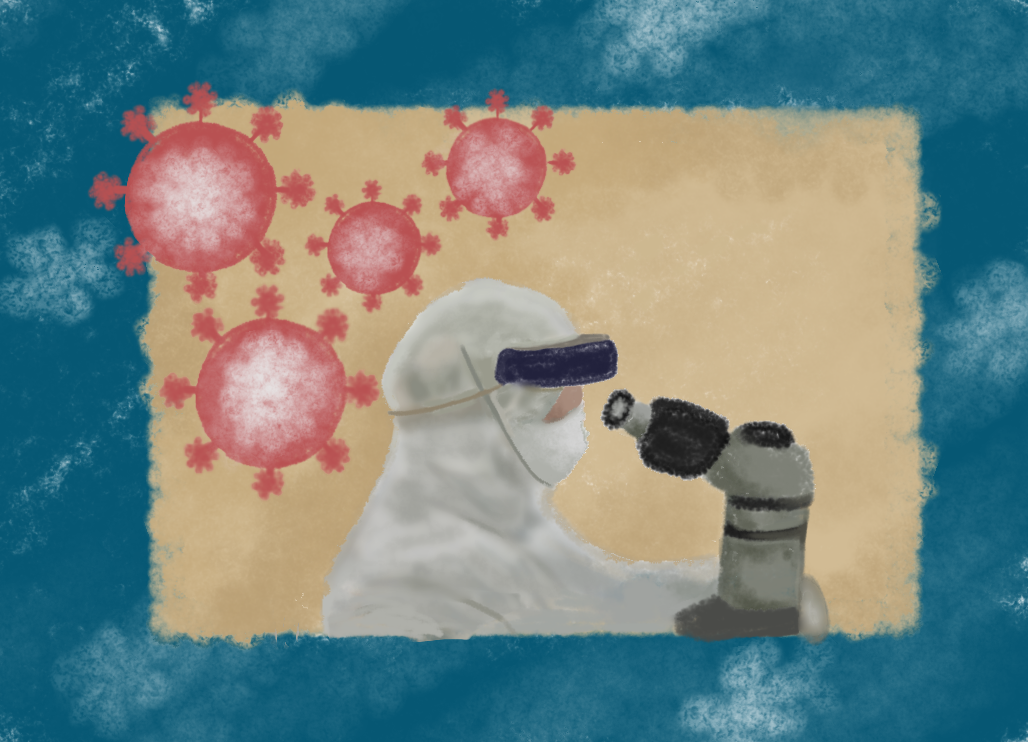This is the first of a two-part series. Click here to read the second part.
When the coronavirus disease (COVID-19) was declared a pandemic in March 2020, poultry farmer Troy Mirador acted fast to protect his family’s broiler farm in Talavera, in the landlocked province of Nueva Ecija, north of Manila.
He limited the number of people and deliveries of poultry medicines and chicken feed into their compound to minimize contact between people and animals and prevent possible infection.
The farm has about 200,000 chickens so Mirador’s priority was to ensure biosecurity, which in this case refers to managing health risks between humans and animals, a basic practice in poultry operations even in the absence of a health crisis.
“Once a person or we have brought a disease inside the farm, it is contagious; it’s the same for chickens, once one is infected, everyone will be affected, so cleanliness and biosecurity are very important,” Mirador told VERA Files in an interview.
“In the morning, we spray disinfectant in the compound. We do this every other day or every other two days, and foot baths before we enter the building or the chicken coop. We use different slippers when going outside and inside,” he said.
Mirador, 26, emphasizes the need for environmental disinfection and cleanliness for the broilers, as well as ventilation. He said he has spent a total of P6 million to P8 million for feeders, drinkers, heaters, and exhaust fans in order to maintain safety standards in building and maintaining the farm.
Their “strict farm biosecurity” had kept his broiler farm free from the effects of at least three outbreaks of avian influenza (AI) in some parts of the country over the last seven years, which also affected a few farms in his province.”
AI, a “highly contagious viral disease,” infects several species of birds, according to the World Organization for Animal Health (OIE). The virus causing it can be transmitted from bird to bird, bird to human and eventually spread to other humans through infections of feces to oral routes and through contaminated food and water, among others.
The Philippines currently has 724 bird species, aside from chickens, of which around 200 are endemic.
Despite the absence of cases in the Philippines, Briones said, “the most important avian virus globally is AI, as it has been reported to cause severe illness and death in some people.”
In November 2009, nearly all countries reported cases of infection with pandemic influenza A (H1N1) virus. The WHO noted that a large fraction of deaths occurred in “patients with chronic respiratory conditions.”
But Reildrin Morales, a licensed veterinarian and director of the Bureau of Animal Industry (BAI) under the Department of Agriculture (DA), said human infections of zoonotic influenza do not spread quickly between people.
Keeping a close eye on strains
Symptoms of AI vary depending on the strain — which is the genetic subtype of a virus or bacteria — and the type of bird infected.
“These strains may be distinguished by differences in two key proteins in the viral membrane…leading to 178 possible strains of the virus, almost all of which can be found in birds,” said Dr. Annabelle Briones, an expert in viruses and viral diseases and head of the Industrial Technology Development Institute (ITDI) at the Department of Science and Technology (DOST) located in Taguig City, Metro Manila.
“Not all these strains can produce outbreaks, and not all are dangerous to humans, but they affect our animal industry in varied ways which is why we need to keep a close eye on them,” she added.
As new strains of the virus which cause AI continue to emerge, some pose a threat to human health.
The World Health Organization (WHO) warned that if a virus has the capability to “spread sustainably from one person to another, it could start a pandemic because it would be so new that humans would have little immunity to it.”
Infectious diseases found in animals that humans can contract are called zoonoses. Zoonotic diseases can be caused by bacteria, viruses or parasites.
Experts from the United States’ Centers for Disease Control and Prevention (CDC) estimate that “more than six out of every 10 known infectious diseases in people can be spread from animals, and three out of every four new or emerging infectious diseases in people come from animals.”
COVID-19 is one example. It was first identified in December 2019 in Wuhan, China. Because it was then a new zoonotic disease, sources of transmission were initially unverified, leading to rapid infection rates.
As of Nov. 26, the WHO has recorded nearly 260,000,000 confirmed cases of COVID-19 and over 5 million deaths. On Nov. 28, the Philippines reported a total of 48,361 deaths, one of the 20 most affected countries in the world by COVID-19 in terms of deaths.
One of its strains, the Delta variant, spreads faster than other subtypes of the virus. It may also cause more severe illness in unvaccinated populations.

Photo from VERA Files
Farm owners, such as Mirador, now take the role of whistleblowers in reporting potential animal outbreaks. Aiding them on the frontlines are licensed veterinarians, public health experts, and virologists, all collaborating to prevent emerging zoonotic viruses from escalating into another pandemic.
When poultry is infected, symptoms range from milder conditions, such as difficulty breathing and loss of appetite, to a drop in egg production and sudden death.
At the farm level, Mirador said handlers and owners “do not immediately report” to the local government units (LGU), even when broilers exhibit loss of appetite and dark spots appear on the chickens’ breasts or when there are sudden deaths.
“When there is a sudden death with symptoms of an avian [flu], we contact the vet first, then after discussing with the vet, that’s when we’ll decide if we should treat them or dispose of them with the help of the LGU,” he said, adding that infected animals may still be saved with antibiotics, and through aerial disinfection inside and outside the poultry farm.
The Bureau of Agriculture and Fisheries’ 2018 guide on good animal husbandry practices for chickens and ducks states any farm should report “immediately or within 24 hours” to authorities if there are any signs of a potential disease outbreak.
In case of high poultry deaths, the BAI imposes a one-kilometer quarantine zone from the “ground zero” of infection. It also restricts movement of live poultry, meat, semen, blood, eggs, feeds, and other similar products within a seven-kilometer radius.
Culling chickens for disease control purposes should result in immediate death or immediate loss of consciousness lasting until death, according to the OIE.
Mariz Blanco, head of the Public Health Event-based Surveillance Unit of the Department of Health (DOH), said early notification and detection in outbreaks, including bird-to-bird infections, is the most important step in containing a health event, stressing the critical role of farmers. Her unit is responsible for monitoring disease cases nationwide.
“For example, a backyard farm may report to the local authorities a sudden death among poultry animals, then the local authorities contact [us] to ensure the [animal] farmers or agricultural farmers…monitor flu-like symptoms,” Blanco said, adding that the farmers or handlers should also be monitored for any possible health problems.
“This way we can test the farmers’ early influenza-like symptoms or even test them that they may transmit possibly the influenza virus,” she said.
Understanding the health risks
Morales echoed Mirador’s sentiment about the importance of defense and preparation, saying that prevention is still “better than cure.”
“Environments that encourage bacterial and viral growth, as well as heightened animal and human interaction, increases the risk of animal disease occurrence,” he said.
Several factors increase the risk of zoonotic diseases, Morales said, including high animal and human population density, and the degree of interaction among humans, animals and the environment; globalization and trade; presence of live animal markets; poor hygiene or sanitation; and access to clean water.
Despite the health threats of AI and the ongoing COVID-19 pandemic, Mirador remains confident in his farm’s security protocol ーmaintaining cleanliness and quarantining new farm animals when delivered to the farm.
“We’ve never experienced any severe diseases on the farm…I think [I have] none [to fear],” he said, adding that panic doesn’t settle in when talking about the likelihood of his poultry getting infected with AI.
Although the DOH has not detected any human case of AI in the Philippines, Briones said infected avians may transmit the virus to other animals such as pigs, especially in a farm where different species are raised together. This could “result in the development of a [another] new strain that can now infect mammals, including humans.”
A strain of AI called H5N1, which was first detected in geese in 1996 in the Chinese province of Guangdong, caused human infections around Asia. Briones said it has been linked to “direct or closer contact with sick or dead poultry infected by the virus” and includes common symptoms such as nausea, vomiting and diarrhea.
A total of 52 laboratory-confirmed human infections with H5N6, including 26 deaths, have been reported to the WHO in the Western Pacific Region from 2014 up until Nov. 18. The recurring cases of the virus in 2021 “have doubled the number” since it was first detected in people seven years ago.
In August 2017, the whole province of Pampanga was placed under a “state of calamity” after an outbreak of bird flu with the H5N6 strain in the town of San Luis.
The BAI then culled about 500,000 chickens from over 10 layer and quail farms “to contain the animal outbreak.”
Affected growers were compensated for P80 (around US$2) per live chicken atop a P25,000 loan (around US$500) from the DA’s Survival and Recovery (SuRE) Program.
Another AI incident was confirmed by the DA at a quail farm in Jaen, Nueva Ecija on March 13, 2020. The infected animals were culled the next day. Four months later, after depopulation and disinfection, there were no more reported cases in Jaen.
A year later on Jan. 8, 2021, the Philippines was declared “bird-flu free” with no remaining AI cases with A(H5N6) strain.
Briones said declaring bird flu-free only means “no cases of influenza detected in fowls for a certain period.” She warns that, “When another migration season starts, infected migratory birds, which are sometimes the source of flu infection to poultry or ducks, can infect the local population of Philippine birds and start a new flu infection.”
“It is essential to study avian flu because it is an ever-present threat,” she added.
Click here to read the second part of the story.
This story is published by VERA Files under a project supported by the Internews’ Earth Journalism Network’s Zoonotic Diseases and One Health Story Grants for 2021.




